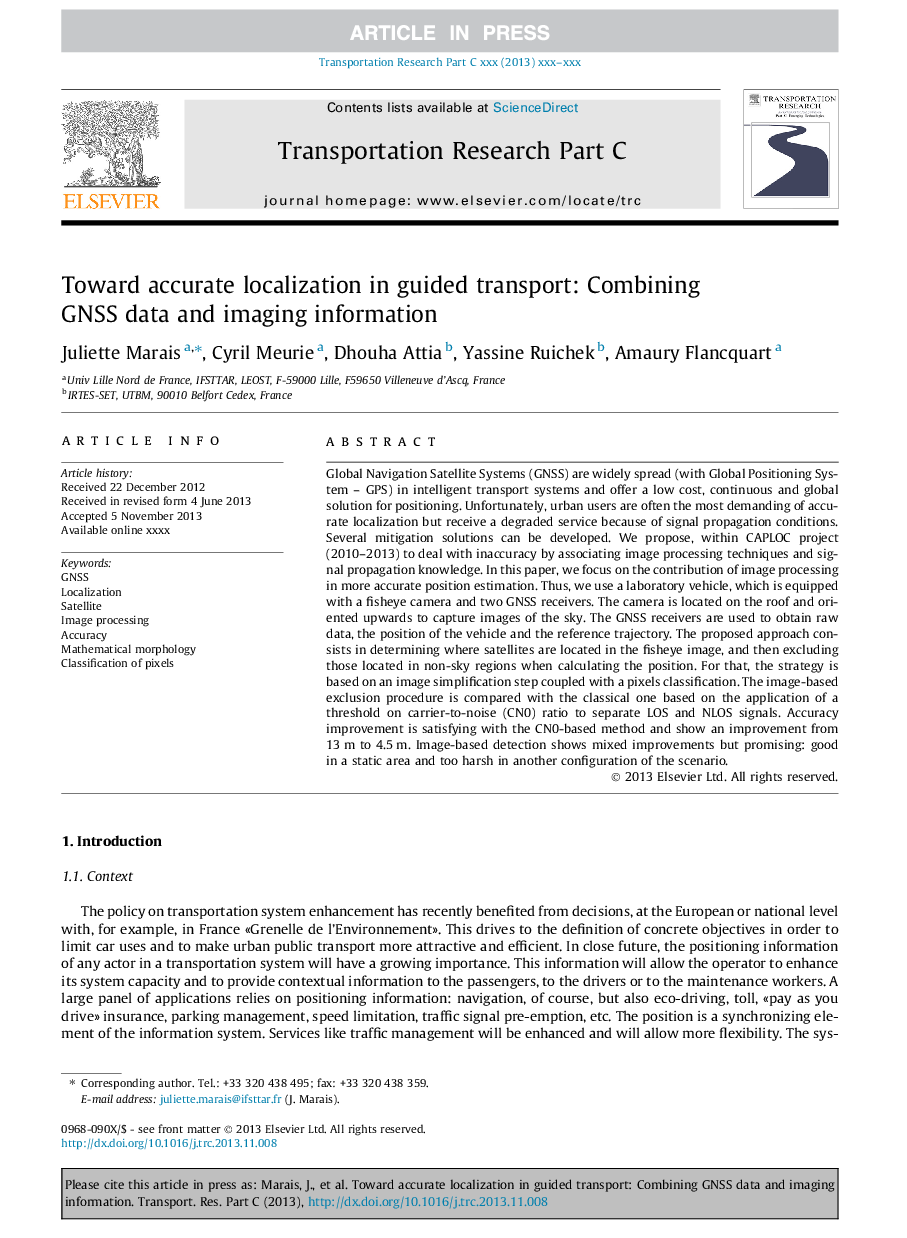| Article ID | Journal | Published Year | Pages | File Type |
|---|---|---|---|---|
| 10359051 | Transportation Research Part C: Emerging Technologies | 2014 | 10 Pages |
Abstract
Global Navigation Satellite Systems (GNSS) are widely spread (with Global Positioning System - GPS) in intelligent transport systems and offer a low cost, continuous and global solution for positioning. Unfortunately, urban users are often the most demanding of accurate localization but receive a degraded service because of signal propagation conditions. Several mitigation solutions can be developed. We propose, within CAPLOC project (2010-2013) to deal with inaccuracy by associating image processing techniques and signal propagation knowledge. In this paper, we focus on the contribution of image processing in more accurate position estimation. Thus, we use a laboratory vehicle, which is equipped with a fisheye camera and two GNSS receivers. The camera is located on the roof and oriented upwards to capture images of the sky. The GNSS receivers are used to obtain raw data, the position of the vehicle and the reference trajectory. The proposed approach consists in determining where satellites are located in the fisheye image, and then excluding those located in non-sky regions when calculating the position. For that, the strategy is based on an image simplification step coupled with a pixels classification. The image-based exclusion procedure is compared with the classical one based on the application of a threshold on carrier-to-noise (CN0) ratio to separate LOS and NLOS signals. Accuracy improvement is satisfying with the CN0-based method and show an improvement from 13Â m to 4.5Â m. Image-based detection shows mixed improvements but promising: good in a static area and too harsh in another configuration of the scenario.
Related Topics
Physical Sciences and Engineering
Computer Science
Computer Science Applications
Authors
Juliette Marais, Cyril Meurie, Dhouha Attia, Yassine Ruichek, Amaury Flancquart,
